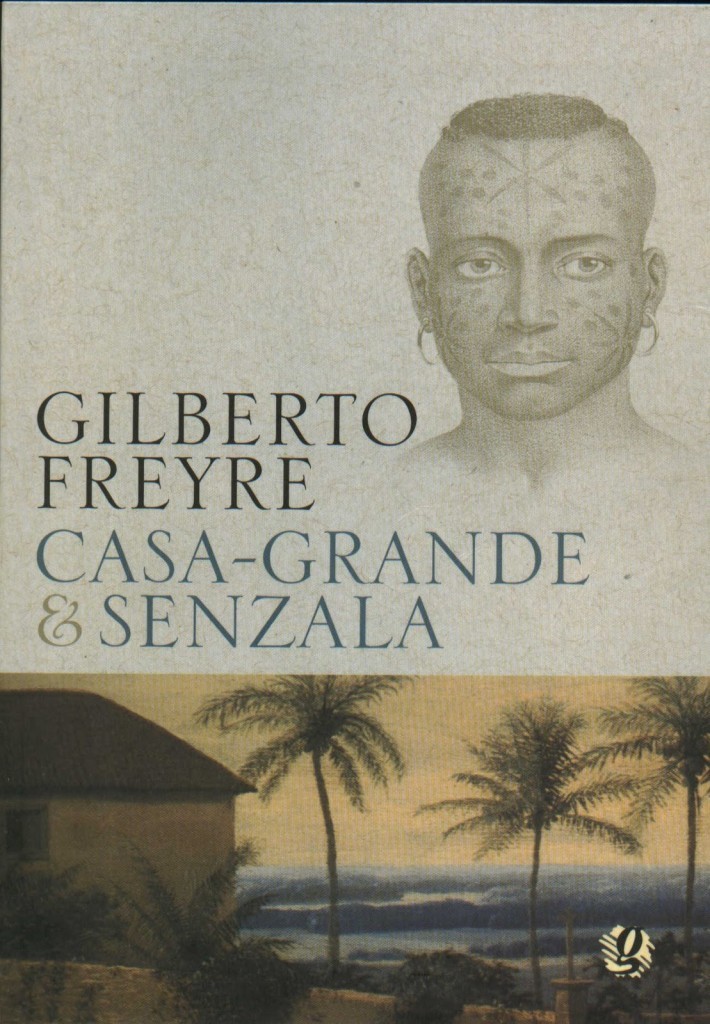Casa Grande & Senzala
Casa Grande & Senzala was the work that made the Brazilian sociologist and writer Gilberto Freyre famous. This essay, published on 1 December 1933, deals with the formation and economic and social development of the Northeast during the colonial era.

The importance of Casa Grande and Senzala
The author sees the cultivation of sugar cane in the mid-sixteenth century as a fundamental element in this process. Gilberto Freyre, born in Recife, Pernambuco, stresses the significant participation of the structure, even the architecture, of the Casa Grande in the constitution of Brazilian society and its cultural determinations. He stresses the importance of the senzala as a complementary pole to this colonial institution.
The patriarchal model
Everything revolves around patriarchy, a model in which a male authority figure exercises power over everyone under his control. The patriarch has control over slaves, family members, children and their descendants, his spouse, and other elements that inhabit his agricultural property. The Casa Grande acts as a symbol that brings everyone together, manifesting the potential to receive the members that make up this community.
Historical context

Casa Grande & Senzala - Gilberto Freyre
“Casa Grande & Senzala was written in the 1930s, during a period of intense transformation in Brazil, marked by significant political and social changes. The country was under the presidency of Getúlio Vargas, who sought to modernise the Brazilian economy and society.
In this scenario, literary modernism gained prominence, promoting a new vision of national identity.
By exploring the roots of Brazilian society, Freyre contributed to the construction of a narrative that sought to understand Brazil’s cultural complexity, especially in relation to indigenous, African and European influences.
Mestizaje and Brazilian identity
Gilberto Freyre rejects the idea that Brazilians are inferior to other peoples because of their constant practice of mestizaje. He reinforces the idea that the miscegenation between Iberians, Indians and Africans contributed to the positive cultural constitution of the people who developed on Brazilian soil.
Routine in the House of the Great Lord
In this book, the sociologist develops his thesis and shows the birth of Brazilian society from the point of view of the routine in the House of the Great Lord.
This building is an instrument used by the author to represent the country itself in the colonial period, based on a monoculture of sugar. In this newly discovered land, harsh nature is seen as a barrier to be overcome before civilisation can develop.
The coloniser’s conflict
In his quest for wealth and glory, the European coloniser confronted barbarism and gradually built a supposedly civilised universe. The families, who stand out in this emerging country because of their power and influence, establish pioneering spaces in the public sphere, strengthen bonds of sovereignty and authority, and create interactive networks that extend everywhere.
The social structure and the state
The state was born out of this union of interests between powerful family groups, almost as a secondary factor. From 1532, a social structure based on the export economic model, stimulated by members of the Brazilian monarchy, emerged, anchored in a production centre, the Casa Grande, which was also established as a sociopolitical nucleus.
The influence of the Jesuits
Gilberto Freyre also demonstrates the domination of the Portuguese over the indigenous peoples by the Jesuits, who sought to dominate them through moral and spiritual indoctrination. They had little choice but to submit to this colonisation of the soul, other than hard labour in the fields or constant flight through the forests.
The role of the slave in Brazilian society
As for the slave, according to Freyre, he plays an important role in the composition of Brazilian society, even acting in the essence of the Brazilian people. This concept, coupled with the author’s vision of Brazilian sexuality, which is explicitly addressed, imbues this work with an unparalleled subversive potential that still needs to be explored more deeply in order to reveal all its hidden potential.
Impact and reception
Since its publication, Casa Grande & Senzala has had a profound impact on Brazilian social science and literature. The work was the first to systematically approach the formation of Brazilian society from a sociological perspective, challenging the racial and social prejudices of the time.
Initial reception was mixed; while many praised the originality and depth of Freyre’s analysis, others criticised his idealisation of colonisation and the relationship between masters and slaves. Over time, the work has become a classic, studied in various disciplines and inspiring generations of sociologists, historians and writers.
The legacy
The legacy of Gilberto Freyre and Casa Grande & Senzala is immense. The work not only brought the discussion of mestizaje and Brazilian identity to the fore, but also influenced debates on racism, social class and culture in Brazil.
Freyre is often cited as one of the founders of Brazilian sociology, and his ideas remain relevant to contemporary studies of Brazilian social and cultural formation. In addition, his work has inspired new approaches in literature, the arts and the social sciences, making Freyre a central figure in understanding the complexities of Brazilian national identity.
Tourist guide to the Northeast, Bahia and Salvador.
Publicações Relacionadas
Northeastern architecture marked by typical features of colonial structures
Rapadura continues in the daily life of the northeasterner to this day
Geography and Climatic Regions of the Brazilian Northeast
Why go to the Brazilian Northeast?
Tropical flowers are grown on a large scale in northeastern Brazil
The influence of Arab architecture on the buildings of Pernambuco
History of the introduction of Portuguese tiles in Brazil
Fine Arts in the Brazilian Northeast
History of the Brazilian Northeast
Influences and main dishes of northeastern cuisine
History of Carnival in Northeast Brazil
José Américo de Almeida left Paraíba to revolutionize northeastern literature
Maranhão's handicrafts have more than 400 years of tradition
Biografia de Jorge Amado
Historic Towns in the Northeast: Explore the Past
São Jorge dos Erasmos Sugar Mill: A Landmark in Brazil
Music and Rhythms of the Brazilian Northeast
Tracunhaém and Its Rich Clay Handicraft Tradition
This post is also on:
![]() Português
Português ![]() English
English ![]() Deutsch
Deutsch ![]() Español
Español ![]() Français
Français



















